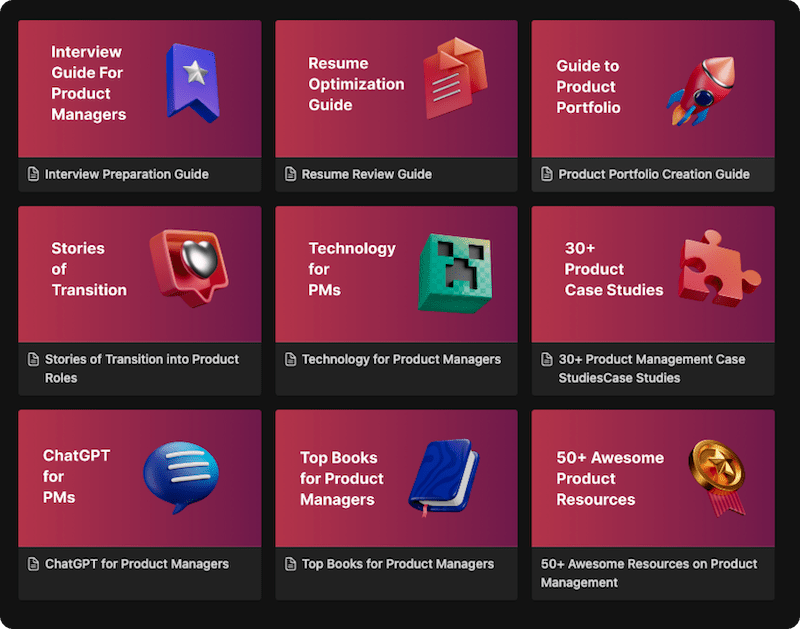Every great product starts with clarity, not code.
Before a single feature is designed or developed, product managers rely on one essential tool: the Product Requirements Document (PRD). It’s not just paperwork, it’s the blueprint that turns messy ideas into real, buildable solutions.
If you’ve ever faced confusion over features, changing priorities, or endless back-and-forth between teams, chances are, a strong PRD could’ve saved hours of time (and a few headaches, too).
In this guide, we’ll walk you through everything you need to know about writing an effective PRD in 2025, from structure and examples to tools and templates that actually work. Let’s get into it.
What is a PRD?
A Product Requirements Document (PRD) is a guide crafted by the product manager that spells out the product’s goals, main features, technical needs, and limits, such as budget or timeline. It outlines exactly what the team will build, why it matters, and how it should function. Most PRDs include sections like-
- Purpose: What problem are we solving?
- Target Audience: Who will use this?
- Features & Requirements: What we need to build.
- Non-Functional Needs: Performance, security, design clarity.
- Constraints: Budget, technology, time.
PRD vs MRD: What’s the Difference and Why It Matters
As a product manager, you’ll often encounter two foundational documents- PRD (Product Requirements Document) and MRD (Marketing Requirements Document). While they sound similar and are sometimes even used interchangeably, they serve very different purposes and are created at different stages of the product lifecycle.
Think of the MRD as the “why” behind the product, and the PRD as the “what” and “how.” The MRD lays out the business case, customer needs, and market demand. It’s your strategic north star. The PRD, on the other hand, translates that strategy into actionable product functionality for your engineering and design teams to build.
Here’s a breakdown of how these two critical documents compare:
PRD vs MRD: A Side-by-Side Comparison
Feature / Focus Area | MRD (Marketing Requirements Document) | PRD (Product Requirements Document) |
Purpose | Defines why the product should be built and what the market demands | Defines what the product will do and how it will work |
| Created By | Typically by Product Marketing or Product Managers in collaboration with stakeholders | Created by Product Managers, sometimes in collaboration with Design and Engineering |
| Focus | Market problems, user needs, competitive landscape, customer segments | Features, user stories, use cases, and technical requirements |
| Audience | Executives, Marketing, Sales, and Product teams | Engineering, Design, QA, and cross-functional implementation teams |
| Content | – Market opportunity – Customer personas – Business goals – High-level features | – Feature specs – User flows – Functional requirements – Acceptance criteria |
| Level of Detail | High-level and strategic | Detailed and execution-focused |
| Time of Use | Early in the product lifecycle (during discovery and validation) | After the MRD is approved, during the planning and execution phases |
| Output | Green light for product investment | Clear build scope and expectations for delivery |
| Updates | Reviewed quarterly or during strategic reviews | Updated more frequently during sprint planning or release cycles |
| Example | “We need to launch a mobile payments feature for small businesses to capture a growing segment.” | “The payments feature will support QR codes, integrate with UPI, and offer multilingual support.” |
Why is a PRD Needed?
A Product Requirements Document plays a critical role in the product development process. Here’s why it’s essential:
- Stakeholder Alignment: A PRD ensures that all stakeholders, including product managers, developers, designers, marketers, and executives, are aligned with the product’s vision, goals, and features.
- Decision Making: PRDs provide a structured framework for making informed decisions throughout the product development lifecycle, from prioritising features to allocating resources effectively.
- Scope Management: PRDs help manage the scope of the project by clearly outlining what is included (and what is not included) in the product development efforts, thereby preventing scope creep and ensuring project focus.
- Communication: PRDs facilitate effective communication among cross-functional teams by providing a shared understanding of the product’s objectives, functionalities, and clearly defining roles, responsibilities, and expectations for each team member involved
How to Use a PRD?
A Product Requirements Document (PRD) is not something you write once and forget. It should be used and updated regularly throughout the product development process. Here’s how:
- Iterate & Feedback: Continuously update the PRD based on stakeholder feedback to refine product features and user experience.
- Versioning and Collaboration: Keep track of PRD changes and encourage input from all teams, utilizing diverse expertise.
- Strategic Alignment: Ensure the PRD aligns with business goals and user needs, supporting the product’s market fit and value.
- Validation and Adaptability: Regularly test the PRD against user and market feedback, staying flexible to adjust to new insights and conditions.
- Openness and Accountability: Make the PRD accessible to all stakeholders, fostering transparency and collaborative development.
Don’t start from scratch – Download this Free PRD Notion Template and align your team instantly!
Components of a PRD
A Product Requirements Document (PRD) usually includes several key sections that guide the entire product development process. Here’s what it should cover:
- Project Overview: Start with a clear title and a short summary of what the product is about. You can also include a change log to track updates made to the document.
- Goals and Success Metrics: Define what you’re trying to achieve with this product or feature. List clear success metrics so the team knows what success looks like. Also, include the release timeline or key milestones.
- User Personas and Scenarios: Describe who the users are. Include simple personas that show their needs, problems, and goals. Add real-life scenarios that explain how these users will interact with your product.
- Features and Requirements: List out the main features of the product. Break them into user stories or tasks that help the team understand what needs to be built. You can also include technical requirements that developers need to keep in mind.
- Designs and Visuals: Add early sketches, wireframes, or mockups to show how the product might look and work. You don’t need final designs- just enough for the team to understand the user flow and layout.
- Open Questions and Risks: List anything that’s still unclear, like technical limitations or open design questions. This helps everyone stay aware of what needs further discussion or decision.
What are the Steps to Create a PRD?
For a comprehensive guide to mastering the craft of PRDs, delve into this complete walkthrough.
Assuming a Market Requirements Document (MRD) or high-level strategy already exists, the process of creating a Product Requirements Document (PRD) begins with clear cross-functional alignment and a deep understanding of the problem to be solved.
Here’s a step-by-step breakdown of how to create a PRD:
Steps to Create a Product Requirements Document (PRD)
| Steps | What to Do | Key Questions to Ask | Who’s Involved |
| 1. Align on Objectives | Sync with marketing, leadership, and customer teams to define goals | – What are the business goals? – Who are the users? – What does success look like? | Product, Marketing, Business Leaders |
| 2. Define Scope | Use frameworks (RICE, MoSCoW, etc.) to prioritize features and define boundaries | – What’s in scope? – What’s out of scope? – Must-haves vs. nice-to-haves? | Product Managers, Stakeholders |
| 3. Draft the PRD | Write a detailed PRD using inputs from data, research, and team feedback | – What are we building? – Who is it for? – Why does it matter? – How will it work? | Product, Data Analysts, Research |
| 4. Review Internally | Share the draft with PMs, engineers, and designers for early feedback | – Are there any gaps? – Are use cases and edge cases clear? – Is it technically feasible? | PMs, Engineering, Design, Analysts |
| 5. Get Stakeholder Sign-Off | Share for review with sales, customer success, and leadership | – Are goals aligned? – Are expectations clear? – Are business concerns addressed? | Sales, Customer Success, Executives |
| 6. Hand Off for Technical Scoping | Engineering team begins technical planning and flags trade-offs | – Are there any blockers? – Can everything be built as proposed? – Any scope changes? | Engineering Leads |
| 7. Involve Design & QA | Designers create visuals; QA defines test scenarios | – Are flows and prototypes ready? – What are the success criteria? – Any edge cases to test? | Designers, QA/Test Engineers |
| 8. Final Sign-Off & Versioning | Finalize PRD, track versions, and store in a shared location | – Is the document final? – Is version control in place? – Does everyone have access? | All Cross-Functional Teams |
How to read a PRD?
Reading a Product Requirements Document (PRD) is like using a map before starting a journey. It helps you know where you’re going, what you’ll need, and how to get there. Here’s a simplified guide for product managers on how to read a PRD:
- Grasp the Big Picture: Start with the executive summary to understand the project’s purpose, target audience, and main objectives. This high-level view sets the stage for the detailed information that follows.
- Understand User Requirements: Focus on the users’ needs, pain points, and the proposed solutions. Examine the use cases to see how the product fits into their workflow or daily life.
- Review Specifications: Go through both functional and non-functional requirements, including performance, security standards, and compliance needs. These define what the product must achieve and its quality benchmarks.
- Assess Scope and Technicalities: Identify what’s included and excluded in the project scope, understand any technical specifications provided, and note any design elements like mockups or wireframes. This helps in aligning with the engineering team and visualizing the end product.
- Plan and Collaborate: Note the timeline, key milestones, and the feedback mechanism. Prepare for continuous collaboration and iteration based on feedback and new insights. Document questions and discussions for future reference and ensure changes to the PRD are communicated effectively to all stakeholders
Importance of a 1-Page PRD
One Page PRD streamlines the communication of a product’s core objectives and features, ensuring everyone from developers to stakeholders is on the same page. Here’s why it’s important:
- Clarity: By condensing the product vision to a single page, it eliminates ambiguity, focusing solely on what’s crucial.
- Improves Communication: Its succinct nature facilitates quick sharing and reviewing, making discussions and decisions more efficient.
- Streamlines Development: It helps prioritize essential features, making the development process lean and focused.
- Supports Agile Practices: The one-page format is adaptable and perfectly suited for agile environments where flexibility and rapid iterations are key.
- Accountability: It acts as a clear reference for the project’s goals, aligning teams and ensuring accountability towards the vision.
For product managers, a one-page PRD is a tool that drives clarity, efficiency, and alignment throughout the product development lifecycle. Keeping it simple yet comprehensive ensures that your team can move swiftly towards creating a product that meets your vision and the market’s needs.
Example PRDs and other Resources
- ProductHunt PRD
- Apple AirPods PRD
- AirBNB PRD
- Wireframes in Figma.
- Best practices for creating flow diagrams
- Event sheet template and plan
Zooming Out
It’s easy to admire the polish of a finished product. The smooth UX, the tiny micro-interactions, the “it just works” feeling. But what most people don’t see is the quiet clarity behind it – the planning, the trade-offs, the messy whiteboard sketches that eventually shape the final experience.
Every time you book an Uber ride, order dinner from Zomato, or lose track of time scrolling Spotify playlists, you’re not just using a product. You’re stepping into something that started long before launch, with one humble yet powerful tool: the PRD.
The PRD isn’t just a spec sheet. It’s the document that asks the right questions before anyone starts building. And no, it’s not just about listing features – it’s about aligning minds. It brings scattered ideas into focus, turns uncertainty into structure, and helps designers, developers, and stakeholders speak the same language when the pressure’s on.
In the whirlwind of product sprints, feature drops, and shifting priorities, a good PRD becomes your team’s north star – cutting through the noise, guiding decisions, and saving you from those “wait, what are we building again?” moments.
Because let’s be honest: great products aren’t born out of chaos. They’re built with intention. They start with clarity.
And more often than not, they begin with a well-written PRD.
Frequently Asked Questions (FAQ’s)
1. What is the main purpose of a PRD?
A PRD outlines what needs to be built, for whom, why, and how. It helps the product team stay aligned on goals, features, user needs, and project constraints by ensuring everyone is on the same page before development starts.
2. Who writes the PRD?
Usually, the product manager writes the PRD with input from stakeholders like designers, developers, and business teams. In some cases, senior product owners or product leads may contribute to or review it.
3. Is a PRD necessary in agile product development?
Yes, but it’s often shorter and more flexible. While agile teams may not use a lengthy PRD, a lightweight version (like a one-pager or live Notion doc) still helps define the core requirements, user stories, and success metrics.
4. What’s the difference between a PRD and an MRD?
- PRD (Product Requirements Document): Focuses on what to build- features, user stories, and functionality.
- MRD (Market Requirements Document): Focuses on why to build it-market demand, customer problems, and business opportunity.
5. How long should a PRD be?
There’s no fixed length. A PRD can be:
- 1-page (for small features or MVPs)
- 5–10 pages (for detailed product launches)
The focus should be on clarity and completeness, not length.
6. What should not be included in a PRD?
Avoid adding overly technical details (like code-level specs), complete design files, or business case justifications. Keep it focused on product functionality and user value.
7. How often should a PRD be updated?
Update your PRD:
- Whenever a feature is added, removed, or changed
- After team feedback or discovery sessions
- At major milestones or release planning stages
Version control is important to keep everyone aligned.
8. Can I use templates to create a PRD?
Yes! Templates save time and ensure consistency. Use tools like Notion, Confluence, or Google Docs, and tailor the template to match your team’s workflow.
👉 Download a Free PRD Notion Template
9. What happens after the PRD is approved?
Once finalized, the PRD is shared with engineering, design, QA, and other teams. It becomes the foundation for:
- UX mockups
- Development tickets
- Test cases
- Project timelines
10. Is a PRD required for every product feature?
Not always. For small updates or UI tweaks, detailed PRDs may not be necessary. However, for new products, major releases, or complex features, a PRD is crucial for clarity and cross-team alignment.
 WATCH HELLOPM COHORT IN ACTION
WATCH HELLOPM COHORT IN ACTION


